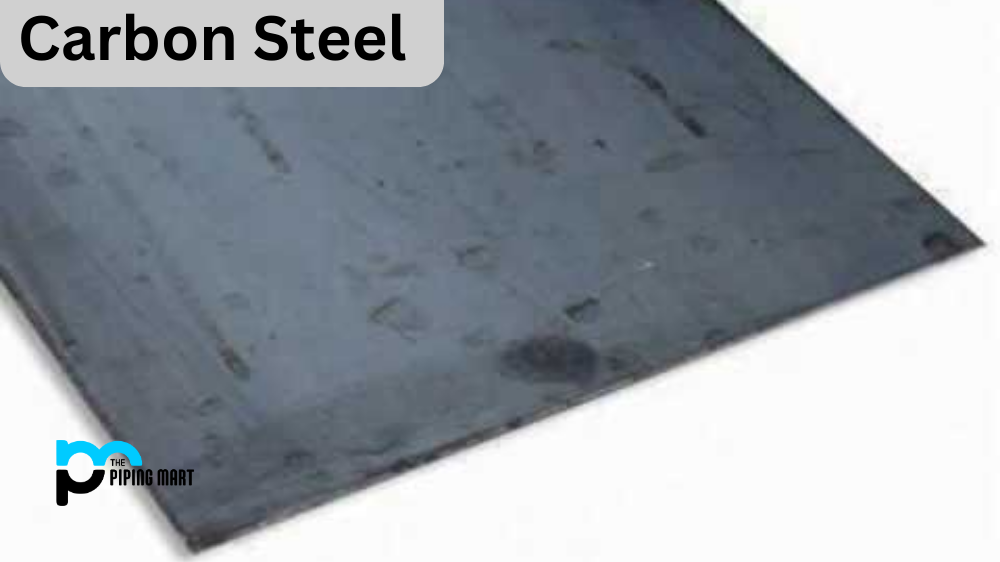Sustainable construction is quickly becoming the norm, driven by the need to reduce carbon emissions and protect the environment. Architects, engineers and builders constantly explore alternative materials and methods to create eco-friendlier structures. Carbon steel, a material widely used in construction for centuries, is one such option. In this blog post, we’ll explore carbon steel’s role in sustainable construction and how this versatile material can help us build a better future for our planet.
What is Carbon Steel?
Carbon steel, also known as plain carbon steel or mild steel, is a popular choice of metal for a wide range of applications. It is made primarily of iron and carbon, with other elements such as manganese, silicon, and copper added to improve its strength and durability.
One of the main reasons carbon steel is widely used is its versatility. It can be easily manipulated into various shapes and forms through processes like hot rolling, cold drawing or forging. This makes it an ideal material for construction projects such as bridges, buildings, and pipelines.
Carbon steel has excellent mechanical properties, making it suitable for many industrial uses. It has high tensile strength and can withstand heavy loads without deforming or breaking easily. Furthermore, it is easily welded, allowing for easy joining with other materials.
Carbon Steel’s Role in Sustainable Construction
Durability and Recyclability:
Carbon steel is one of the most durable and long-lasting construction materials. Steel structures can withstand harsh weather conditions, pests and other external factors, making them ideal for long-term sustainability. Moreover, carbon steel is highly recyclable. Steel can be repurposed into new products without compromising its quality or strength. 90% of steel products used in construction today are recycled steel. This reduces the need for new materials and conserves natural resources, making carbon steel an option with a lower environmental impact than other building materials.
Energy Efficiency:
Buildings account for approximately 40% of total global energy consumption. Carbon steel can help reduce this energy consumption. Steel-framed buildings are energy-efficient due to their tight seals, thermal insulation and fewer air leaks. This, in turn, leads to lower energy costs and fewer carbon emissions. Furthermore, steel-framed buildings reduce operating costs and require less maintenance over time, making them a more sustainable choice in the long run.
Versatility:
Carbon steel is an incredibly versatile material. Steel can be shaped into different sizes and shapes, making it ideal for a wide range of construction applications. From high-rise buildings to bridges and tunnels, steel is a reliable and cost-effective option that can adapt to various structural designs. This adaptability ensures its relevance in sustainable construction, where efficient use of space and resources is critical.
Strength and Safety:
Steel is one of the strongest construction materials, making it an ideal choice for high-risk buildings such as hospitals and laboratories. Steel structures are also earthquake-resistant, making them ideal for seismic zones. In addition to its strength, steel is also fire-resistant, ensuring the safety of occupants during a fire. With lower fire risk and seismic activity, carbon steel can reduce insurance premiums and protect lives and property.
Reduced Carbon Footprint:
As mentioned above, carbon steel is recyclable and highly efficient, contributing to its reduced carbon footprint. But there’s more. Steel manufacturing has also become a less polluting industry in recent years. Production has reduced energy usage and developed cleaner manufacturing processes, making it a more environmentally friendly option. And since steel is a fully recyclable material, virtually no waste is produced in manufacturing. So, when we use carbon steel in construction, we significantly contribute to sustainable development.
Conclusion:
In conclusion, carbon steel is a versatile, durable, and eco-friendly material that can play a crucial role in sustainable construction. Steel-framed structures offer various benefits, including energy efficiency, reduced carbon footprint, durability, safety and versatility. By using carbon steel in construction, we can create safe, efficient, long-lasting buildings with a low impact on the environment. As the world continues to focus more on sustainability, carbon steel is here to stay as a major player in the future of construction.
Sakshee is a talented blogger, with a particular focus on the Business and Metal Industry. She is passionate about sharing her insights on various metal products and helping professionals to make a better decisions.




